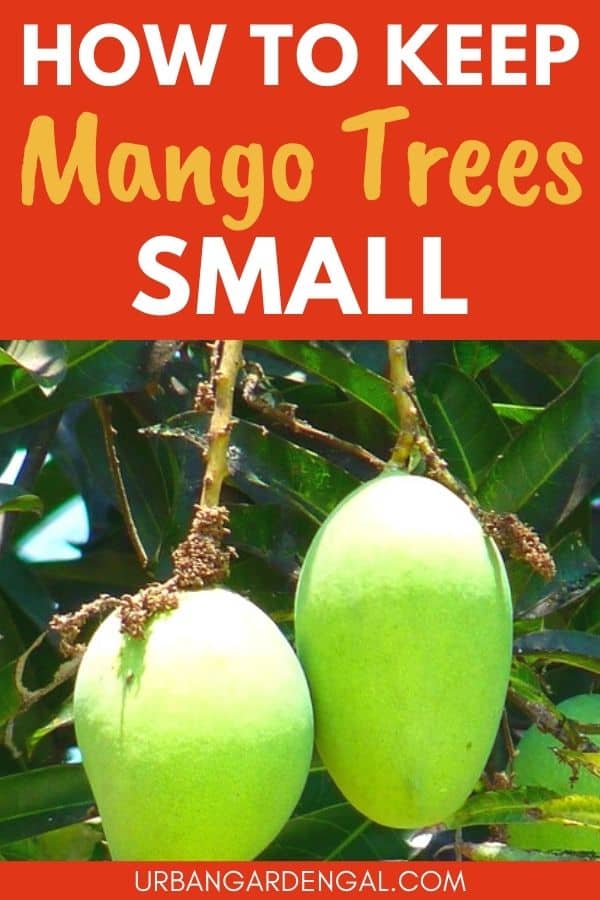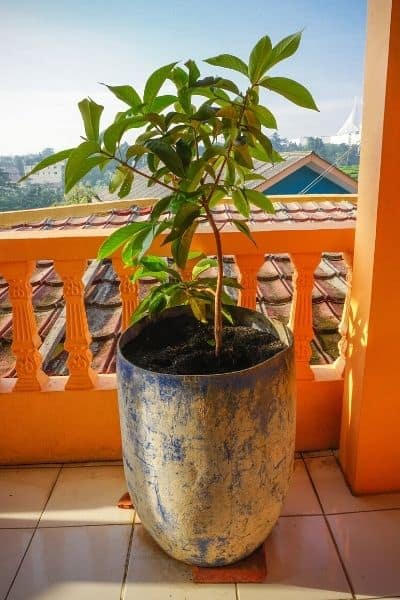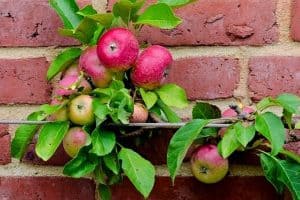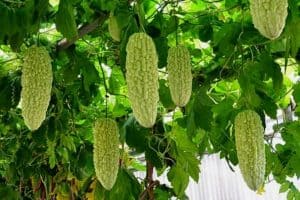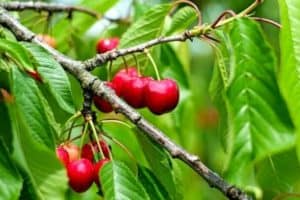Small mango trees are ideal for backyard gardens, but how do you keep your mango tree small?
In this article I’ll show you how to select, prune and care for mango trees to keep them small and compact.
This post contains affiliate links. Please read the disclosure for more info.
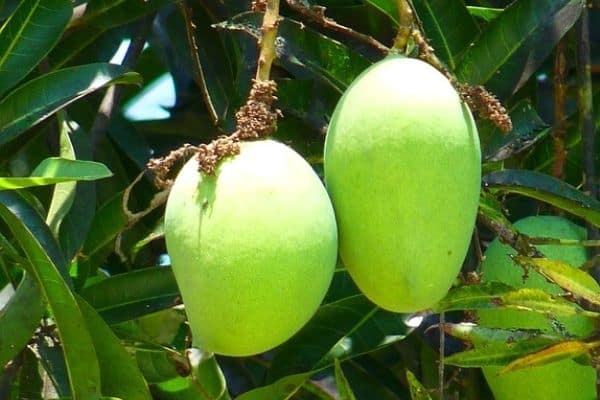
Mango trees are best suited to warm tropical and subtropical areas, but some varieties can also be grown in temperate climates, as long as they’re frost free.
Mango trees can grow up to 33 feet (10 metres) tall but you can keep them to a smaller, manageable size with regular pruning.
Benefits of keeping mango trees small
An open canopy with plenty of space between the branches allows for increased sunlight and air circulation, which reduces the likelihood of fungal diseases.
Small mango trees can put more energy into fruit production, which leads to larger and better quality fruit.
Small trees also produce a higher yield and stay productive for longer than large, unpruned trees.
It’s much easier to harvest the fruit from small trees and you can fit more trees in your backyard.
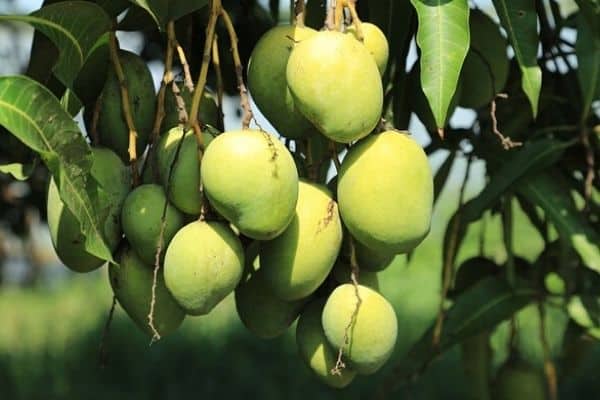
Choosing a small mango tree
The first step in keeping mango trees small is to pick the right variety of mango tree for your garden.
Dwarf mango trees are ideal for small backyard gardens and their compact nature means that they’ll only reach 10 to 13 feet (3 to 4 metres) tall.
Their small size also means that you can easily cover them with netting to keep the birds away or grow them in a greenhouse in cooler climates.
Some common dwarf mango varieties include Sensation, Palmer and Irwin.
Planting mango trees in containers
Potted mango trees don’t take up too much space so they’re great for decks, courtyards and balconies.
Choose a large container with drainage holes in the bottom and use a good quality potting mix that drains easily to prevent the soil becoming waterlogged.
Place the container in a spot that receives at least six hours of sunlight each day.
Mango trees need plenty of water during spring and summer while they’re actively growing and producing fruit.
Give them a deep watering during extended dry periods and fertilize with a liquid fertilizer every two to three weeks during spring and summer.
Once the weather starts to cool down in fall you can stop fertilizing and reduce the watering frequency.
Pruning mango trees
Mango trees are fast growing, so regular pruning is necessary to keep them small and compact.
The best time to prune mango trees is after harvesting the fruit, but you can remove diseased branches at any time of the year to keep the trees healthy.
Start pruning while the trees are still young to train them into the shape you want.
Trimming the top of the tree helps to limit the height of the tree and encourages new branches to grow at the sides of the tree to give it a fuller shape.
Remove any branches growing towards the centre of the tree and thin out the central branches.
Mango trees can also be espaliered on a fence or wall so that they grow flat against the surface to maximize space.
Potted mango trees grow more slowly than trees planted in the garden but they’ll also benefit from a yearly prune to keep their size small.
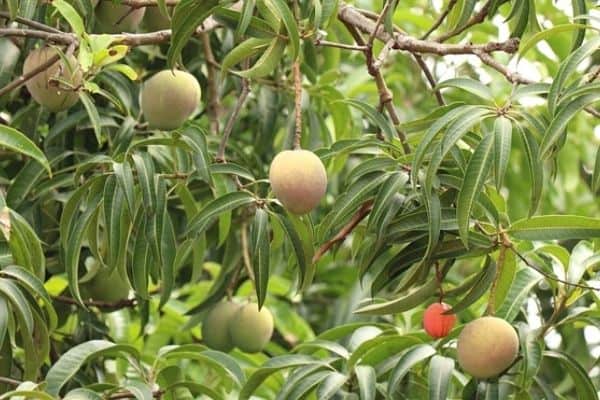
RELATED ARTICLES
- How To Grow Lady Finger Bananas
- 10 Green Fruits For Your Garden
- How To Grow Mandarin Trees In Containers
- How to Keep Loquat Trees Small
So there are my tips for keeping mango trees small and compact.
If you follow these tips your mango tree will grow into a healthy, productive tree without taking up too much space
Have you had success growing a mango tree in a small garden? Let me know in the comments below.
Are you on Pinterest? I have boards dedicated to Growing Fruit Trees and Gardening Tips that you may enjoy. You can also find me on Facebook.
